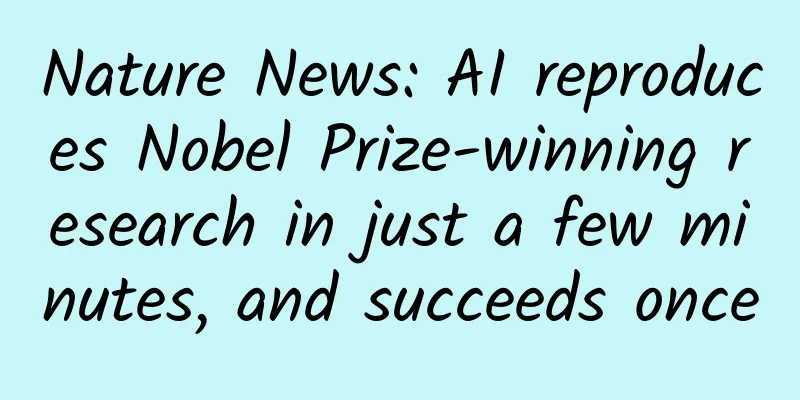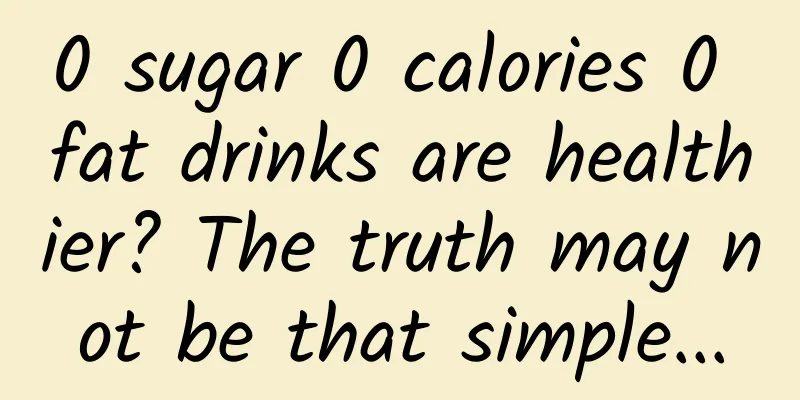Nature News: AI reproduces Nobel Prize-winning research in just a few minutes, and succeeds once

|
In just a few minutes, AI successfully replicated a Nobel Prize-winning research, and it only needed one try. This GPT-4-powered “AI lab partner” is called Coscientist and was jointly proposed by a research team from Carnegie Mellon University and Emerald Cloud Lab, and has just been published in the authoritative scientific journal Nature. It is reported that Coscientist combines the capabilities of large language models (LLMs) with tools such as Internet and document search, code execution and experimental automation to autonomously design, plan and execute real-world chemical experiments . Coscientist demonstrated its potential to accelerate research in six different tasks, including the successful optimization of palladium-catalyzed coupling reactions (American chemist Richard Fred Heck and two Japanese chemists Ei-ichi Negishi and Akira Suzuki were awarded the 2010 Nobel Prize in Chemistry for their research on palladium-catalyzed coupling reactions in organic synthesis), while also demonstrating advanced capabilities in (semi-)autonomous experimental design and execution. Figure | Code generated by Coscientist. It is divided into the following steps: defining the metadata of the method, loading the labware module, setting up the liquid handler, performing the required reagent transfers, setting up the heater-shaker module, running the reaction, and closing the module. (Source: The paper) This research shows that it is possible to effectively use AI to increase the speed and quantity of scientific discoveries and improve the replicability and reliability of experimental results . The related research paper, titled “Autonomous chemical research with large language models”, has been published in Nature. “We can have something that can run autonomously to try to discover new phenomena, new reactions, new ideas ,” said Gabe Gomes, an assistant professor of chemistry and chemical engineering at Carnegie Mellon and senior author of the paper. “You can democratize resources and understanding on a massive scale.” He said the iterative process of trying, failing, learning and improving in science could be greatly accelerated by AI , which in itself would be a dramatic change. “Beyond the chemical synthesis tasks demonstrated by the system, Gabe Gomes and his team have successfully built an efficient laboratory partner that cleverly combines the various components to achieve results far beyond the individual contributions of each part and can be applied to truly beneficial scientific research ,” said David Berkowitz, director of the National Science Foundation’s Division of Chemistry. In a perspective article also published in Nature, Ana Laura Dias and Tiago Rodrigues from the Institute of Pharmaceutical Research at the University of Lisbon’s Faculty of Pharmacy wrote that Coscientist is “a key step towards the establishment of automated laboratories” and that “as long as the potential for abuse of large language models in chemistry does not lead to regulations that stifle related research, we expect more exciting developments in the near future”. However, as described in the paper, Coscientist has some limitations . For example, Coscientist sometimes gives incorrect chemical reactions (although it can correct itself). However, these problems may be alleviated by using complex prompting strategies (such as thought chains and thought trees) and increasing chemistry-related data. In addition, it is important to note that real-world research problems are much more complex than those in this study and often involve concepts from disciplines other than chemistry, such as biology in drug development. However, the current Coscientist cannot solve these complex problems. Successfully reproduced Nobel Prize research According to the paper, Coscientist acquires the knowledge needed to solve complex problems by interacting with multiple modules, including network and document searches, code execution, and experiments. The main module of the system is Planner, which is based on GPT-4. As a laboratory assistant, Coscientist plans experiments by calling four commands (GOOGLE, PYTHON, DOCUMENTATION and EXPERIMENT). Among them, the GOOGLE command is responsible for searching on the Internet, the PYTHON command executes the code, and the DOCUMENTATION command retrieves and summarizes the necessary documents. In addition, these commands can also perform sub-operations. Figure|Coscientist system architecture (Source: the paper) The experiment started with simple tasks. The researchers first asked Coscientists to use a liquid handler machine to dispense colored liquid into a grid plate containing 96 small holes. The task instructions mainly included low-level tasks such as "paint every other row with a color of your choice" and "draw a blue diagonal line." After successfully completing the above tasks, the research team showed Coscientist more types of robotic devices. Next, Coscientist was challenged to identify a plate containing three different colors of liquid (red, yellow and blue) and determine the location of each color on the plate. Figure | Robotic liquid handling control capabilities and integration with analytical tools (Source: This paper) Since Coscientist has no eyes, it wrote code to pass the mystery color board robot to the spectrophotometer and analyze the wavelength of light absorbed by each small hole to determine which colors are present on the board and their locations. For this task, the researchers had to give Coscientist a little guidance in the right direction, instructing it to think about how different colors absorb light. The rest of the work was done autonomously by the AI. In the final test, the Coscientist was responsible for performing the "Suzuki and Sonogashira reactions". The two reactions are named after their inventors. Discovered in the 1970s, these reactions use the metal palladium to catalyze chemical bonds between carbon atoms in organic molecules. These reactions play an important role in creating new drugs for the treatment of inflammation, asthma and other diseases. In addition, they are widely used in organic semiconductors such as OLEDs (organic light-emitting diodes), a technology used in many smartphones and monitors. These groundbreaking reactions and their wide range of applications were awarded the Nobel Prize in 2010. Of course, Coscientist had never tried these reactions before . Coscientist mainly looked for answers on Wikipedia, but also involved a range of other websites, including those of the American Chemical Society, the Royal Society of Chemistry, and others that contain academic papers describing the Suzuki and Sonogashira reactions. In less than four minutes, the Coscientist devised an accurate program to achieve the desired reaction using chemicals provided by the team. However, while trying to execute its program in the physical world using the robot, it made a mistake when writing the code that controlled the device that heated and vibrated the liquid sample. Without human prompting, the Coscientist identified the problem, consulted the device's technical manual, corrected the code, and tried again. Figure | Cross-coupling Suzuki and Sonogashira reaction experiments designed and performed by Coscientist (Source: This paper) The results came in tiny samples of a few drops of clear liquid, which the researchers analyzed and successfully discovered the spectral signatures of the Suzuki and Sonogashira reactions. AI lab partner who “thinks” around the clock In recent years, in addition to Coscientist, AI has made continuous breakthroughs in related research in autonomous laboratories. Not long ago, A-Lab, a laboratory that uses AI to guide robots to make new materials, quickly discovered new materials with minimal human intervention, which can help identify and fast-track materials in multiple research fields, including batteries, energy storage, solar cells, fuel cells, etc. A-Lab successfully synthesized 41 of the 58 predicted materials, with a success rate of 71%. In addition, the Argonne National Laboratory in the United States has invented an advanced technology that leads scientific discovery - Polybot, which can advance the field of science with almost no human intervention by making full use of the capabilities of robotics, high-performance computing and AI (including machine learning). The system can not only realize the synthesis and manufacture of autonomous driving materials, but also transfer, characterize, test and analyze data of robotic samples. In August this year, the Massachusetts Institute of Technology and Singapore's Xinterra said in a paper published in Nature that in the near future, every experimental researcher should have a scientific research AI assistant, who can help us design and execute automated experiments, analyze experimental data, propose mechanism conjectures, and even answer questions. Scientific research AI assistants can significantly reduce the repetitive physical labor of experimental workers, allowing them to focus their main energy on critical thinking. The natural world is virtually infinite in its size and complexity, and contains countless discoveries waiting to be made. Imagine new superconducting materials that could dramatically increase energy efficiency, or compounds that cure otherwise incurable diseases and extend human lifespan. However, obtaining the education and training needed to make these breakthroughs is a long and arduous process, and training a scientist is difficult. We can envision that AI-assisted systems like Coscientist could bridge the gap between the vast unexplored realms of nature and the shortage of trained scientists . In addition, human scientists also have human needs, such as sleeping and resting, while human-guided AI can "think" around the clock and repeatedly check experimental results to ensure repeatability . It can be said that the prospects for AI to conduct autonomous experiments are very broad. Reference Links: https://www.nature.com/articles/s41586-023-06792-0 https://www.nature.com/articles/d41586-023-03790-0 https://www.nature.com/articles/s41586-023-06734-w https://www.nature.com/articles/s41578-023-00588-4 https://www.anl.gov/cnm/polybot |
>>: The "soul" powder on the rolls, once the namesake of Sri Lanka, is more valuable than gold!
Recommend
Mammoths have repeatedly appeared in permafrost. What warnings and impacts does this bring to humans?
According to media reports, several gold miners r...
This may be the most rigorous "full body checkup" in the world...
In the space launch mission, there is an extremel...
China Passenger Car Association & Cree Consulting: Insights into the Three-Electric System of New Energy Vehicles in October 2022
Trends in China's New Energy Vehicle Market I...
The opportunity to observe Mercury has come! Mercury will reach its first eastern elongation this year and can be observed this evening
Tianjin, March 6 (Xinhua) -- A good opportunity t...
Paul Dirac: You'll Never Walk Alone
Dirac is a unique figure in the history of scienc...
Do you know the 8 ways to place Tik Tok ads?
Here are 8 ways for brands to use Douyin. Brands ...
UDesign - [Jia Jia Jia] A Beginner's Guide to Color Matching for Commercial Illustrations
UDesign - [Jia Jia Jia] Commercial Illustration C...
Visual debugging and performance analysis of Node.js applications
In versions prior to Node.js v6.3, the debugger u...
Basic knowledge of data that operators must understand (I)
text The purpose of this open class is to introdu...
Volkswagen Group accelerates innovation "in China, for China": Volkswagen (China) Technology Co., Ltd. will launch an electric vehicle platform for the entry-level market within three years
[November 24, 2023, Beijing/Hefei] Volkswagen Gro...
Online event promotion planning and solution analysis
For operators, event operation is a very importan...
Internet of Things and Robots: Who represents the future of smart homes?
The US technology news website CNET recently publ...
This is the Chaka Salt Lake, which is enough to feed people for 70 years! Satellite view →
Recently, affected by the discharge of nuclear co...
The fabric as thin as a cicada's wing is actually a "silencer"!
Produced by: Science Popularization China Author:...
Why is the Xiaomi 4 4G version so late?
On July 22, 2014, the stainless steel Xiaomi 4 wa...






![[Viewpoint] Will a 400% tax force mobile phone manufacturers to use domestic chips? The road to domestic substitution cannot be rushed](/upload/images/67f0a1b282e0e.webp)


